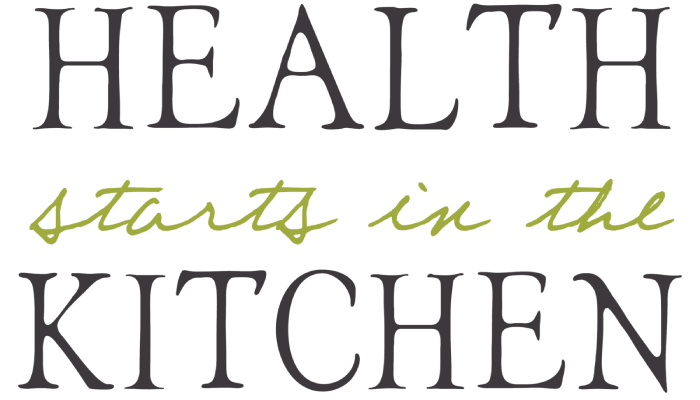How to Eat Healthy Even if you Don’t Like Vegetables; 10 Alternatives to Incorporate
Trying to eat healthier but don’t like vegetables? Check out these ten healthy alternatives that will help you get the nutrients your body needs.

Introduction: Why Eating Healthy is Important
Eating healthy is vital to leading an active lifestyle and maintaining overall wellness. Lasta’s food addict test provides individuals with the necessary tools to learn more about their dietary habits, allowing them to make changes towards a healthier diet.
Eating healthy can keep your metabolism and energy levels in check while providing a variety of vitamins and minerals in your diet that are essential for the proper functioning of the body. Regular consumption of fresh, unprocessed foods can also help control weight, reduce risks for chronic diseases like hypertension and heart conditions, and improve mental clarity.
For an added nutritional boost, some individuals choose to incorporate super greens powders into their daily routine, providing a convenient way to enhance their intake of essential nutrients.
Ultimately, consuming nutritious meals is the key to achieving good health both in the short and long term.
10 Tasty Alternatives to Eating Vegetables That are Equally Nutritious
- Vegetable Juice or Smoothie: Juicing or blending vegetables can make them easier to consume and can be a tasty way to get a concentrated dose of nutrients.
- Vegetable Soup: Vegetable soups are a comforting and easy way to consume various vegetables.
- Vegetable Omelette or Frittata: Adding vegetables to an omelet or frittata can make for a delicious and nutritious breakfast or lunch.
- Vegetable Stir Fry: Stir-frying vegetables with a variety of seasonings and proteins can make for a delicious and easy dinner.
- Vegetable Fried Rice: Adding vegetables to fried rice can make for a tasty and nutrient-dense side dish.
- Vegetable Gratin: Gratins are a delicious and comforting way to consume vegetables and can be made with various cheeses and seasonings.
- Vegetable Pizza: Adding vegetables to a pizza can make for a delicious and nutritious meal.
- Vegetable Quesadilla: Adding vegetables to a quesadilla can make for a tasty and easy meal.
- Vegetable Wraps: Wrapping vegetables in a tortilla or lettuce leaf can make for a delicious and easy way to consume vegetables.
- Vegetable Salad: Vegetable salads can be made with various greens, vegetables, and dressings to make for a delicious and nutritious meal.
These alternatives are only one of the ways to consume vegetables. The most important thing is to find the way that works best for you and that you enjoy. Eating a variety of vegetables will provide the most benefit.
10 Healthy Snacks To Enjoy When You Don’t Like Vegetables
Fresh fruit
Fresh fruits such as berries, apples, and citrus can be a great way to add variety and deliciousness to your meals without vegetables. In addition, they are a great source of vitamins, minerals, and fiber. They can be eaten as a snack or added to your meals.
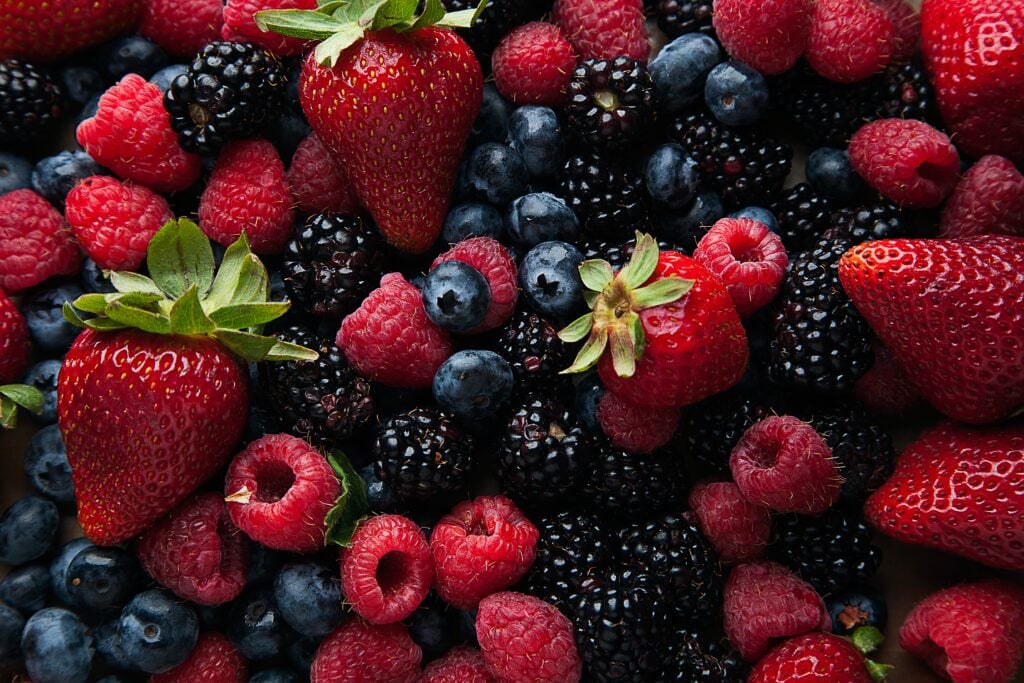
Nuts and seeds
Nuts and seeds such as almonds, walnuts, pumpkin seeds, and sunflower seeds are a great way to add variety and deliciousness to your meals without vegetables. They are a great source of healthy fats, protein, and fiber which can help keep you full and satisfied. They can be eaten as a snack, added to a salad, or sprinkled on top of a dish for added texture and flavor.
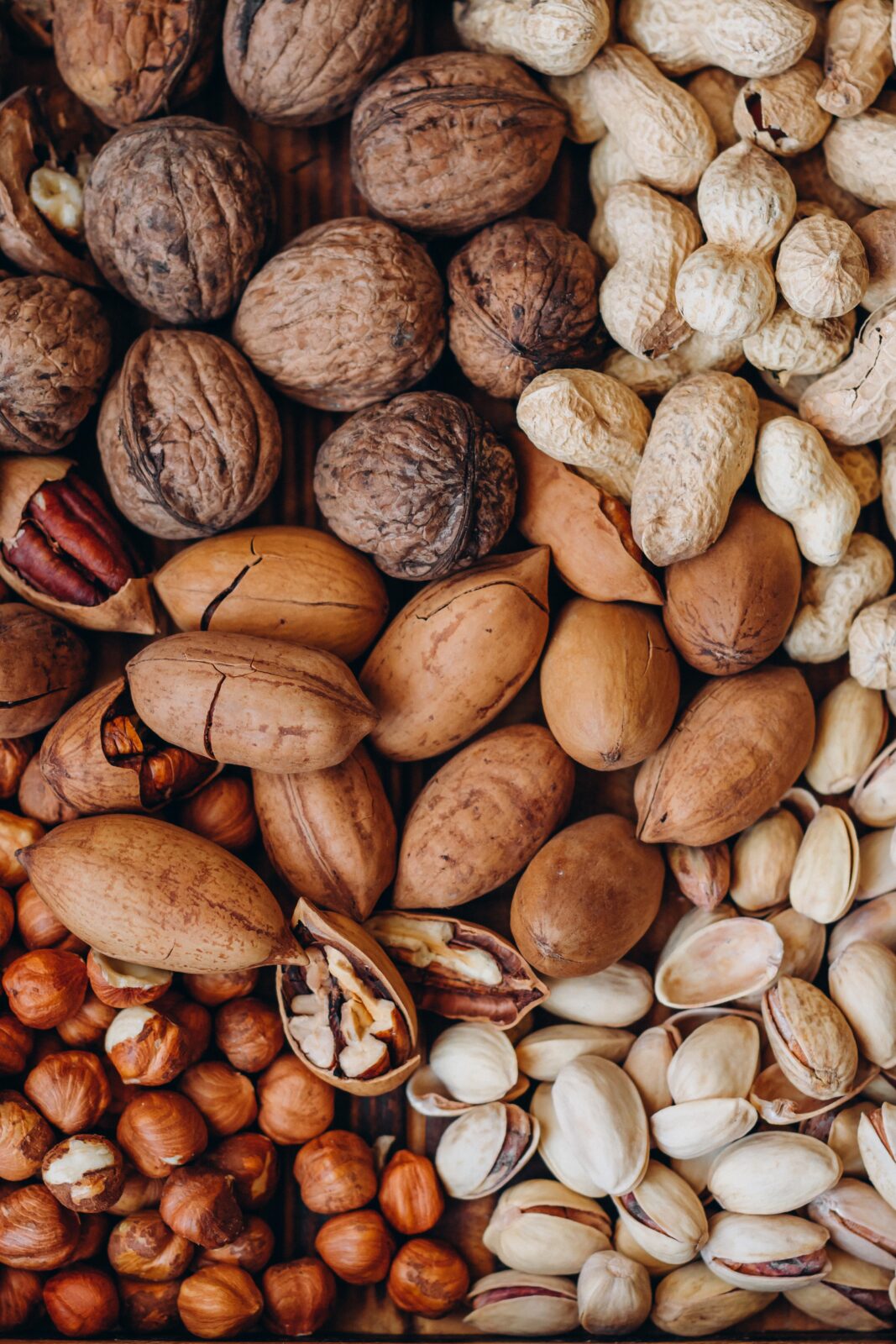
Hard-boiled eggs
Yes, hard-boiled eggs are a good source of protein and healthy fats. They are also a good source of vitamins and minerals such as Vitamin D, B12, Iron, and Choline. Therefore, eating hard-boiled eggs can be a healthy addition to a balanced diet. The Secret to Perfect Hard Boiled Eggs {stovetop method}
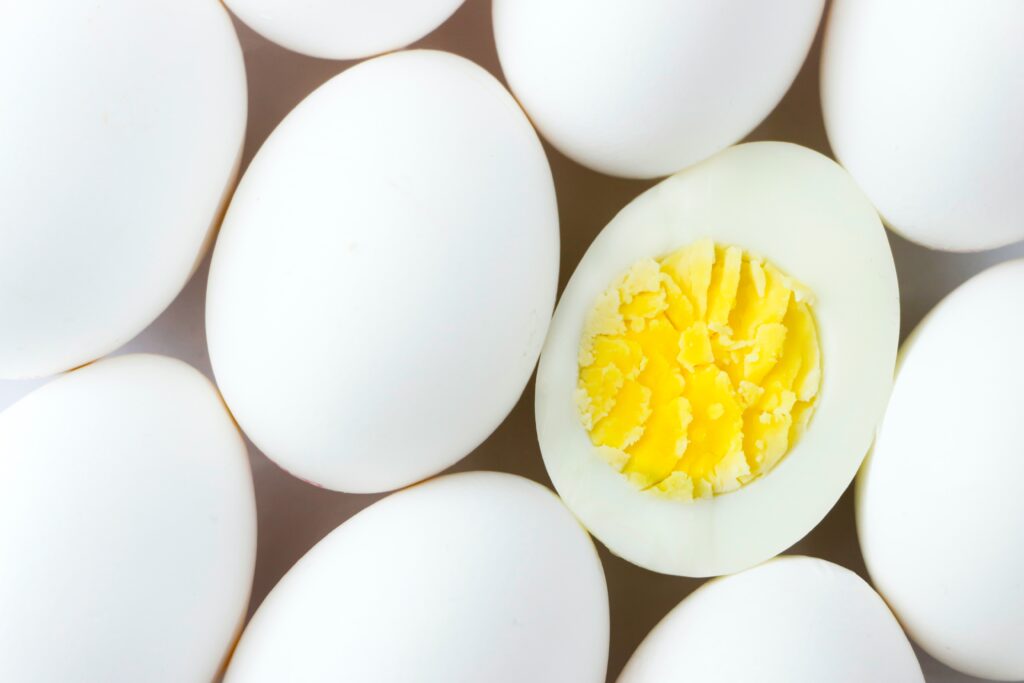
Greek yogurt
Greek yogurt is high in protein, typically 15-20 grams per 6-8 oz serving. In addition, it is a good source of calcium, Vitamin B12, and Phosphorus. Greek yogurt can be paired with various toppings such as fruit, nuts, granola, or honey. Greek yogurt can also be used as an ingredient in many recipes, such as dips, dressings, and marinades. Try my Keto Breakfast Yogurt Parfait or Cantaloupe Yogurt Popsicles
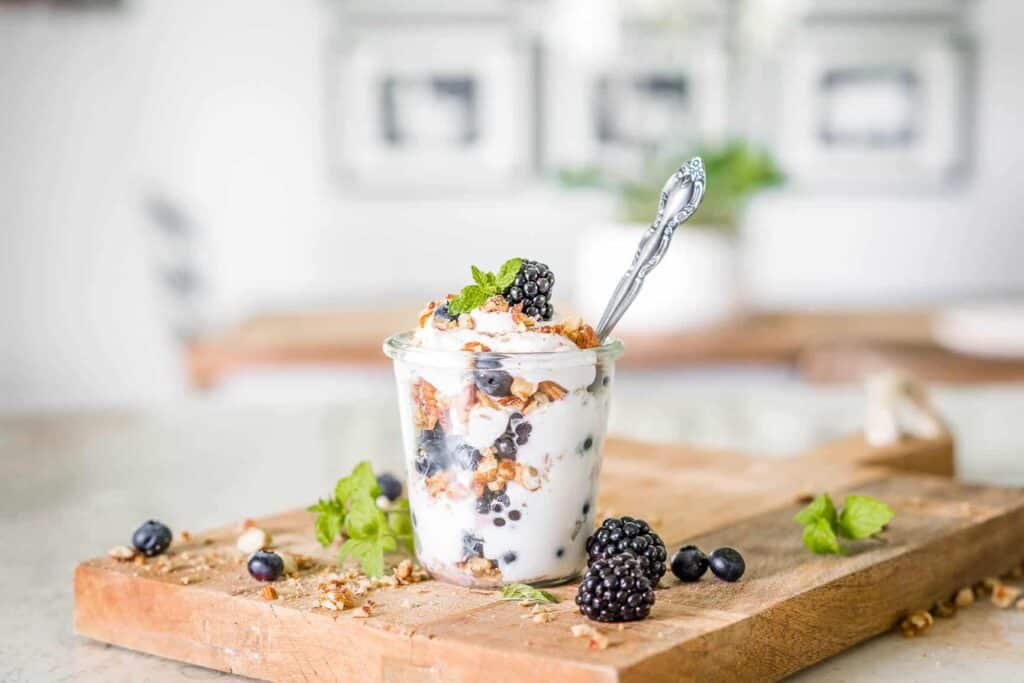
Hummus and crackers
Нummus is made from chickpeas, a good source of protein and fiber. Chickpeas are also a good source of healthy carbohydrates and minerals such as iron and zinc. Hummus typically contains around 2-3 grams of protein per 2-tablespoon serving. Try my Baba Ganoush with Zucchini Recipe
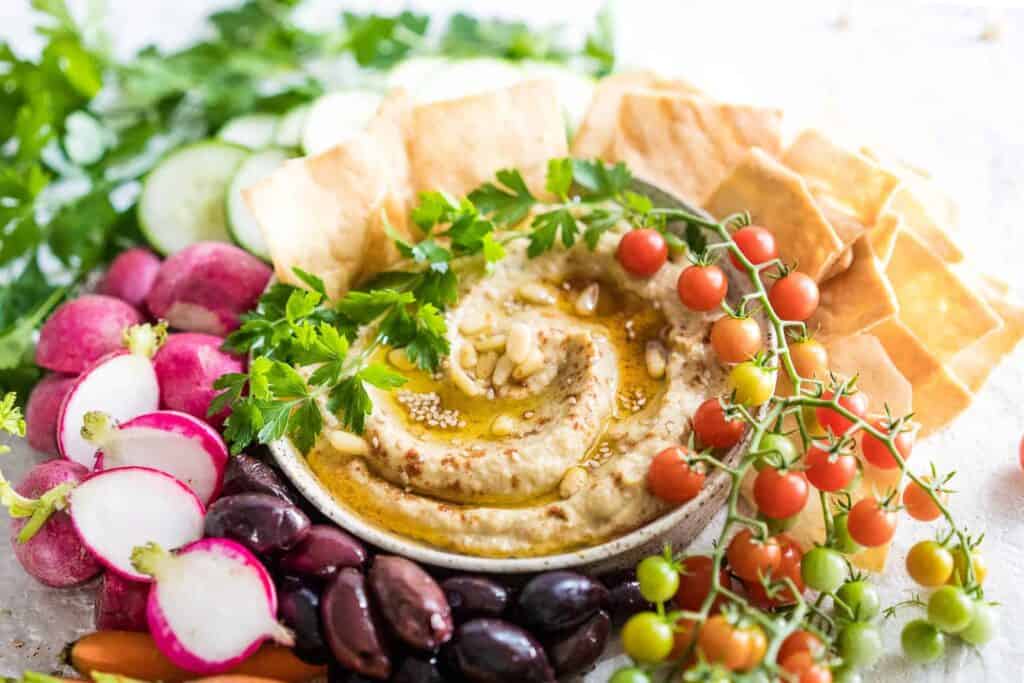
Cheese and whole-grain crackers
The amount of protein in cheese varies depending on the type of cheese, but on average, it contains around 6-8 grams of protein per 1 oz serving. Cheese also contains calcium, phosphorus, and other vitamins and minerals. However, it’s also high in saturated fat and sodium, so it should be consumed in moderation. Try my Easy Gluten Free Crackers with Feta & Sun-Dried Tomatoes Recipe

Pairing cheese with whole-grain crackers can make for a balanced snack, but it’s good to include some fruits or vegetables to make it more balanced.
Edamame
Yes, edamame is an excellent source of plant-based protein and fiber. They typically contain 8-10 grams of protein and 4-5 grams of fiber per 1 cup servings. In addition, they are a good source of healthy fats and minerals such as iron and zinc. Edamame can be a healthy snack, served steamed or boiled with salt, or used in various recipes such as salads, soups, and stir-fries. Try my Spicy Ahi Tuna Poke Bowl Recipe
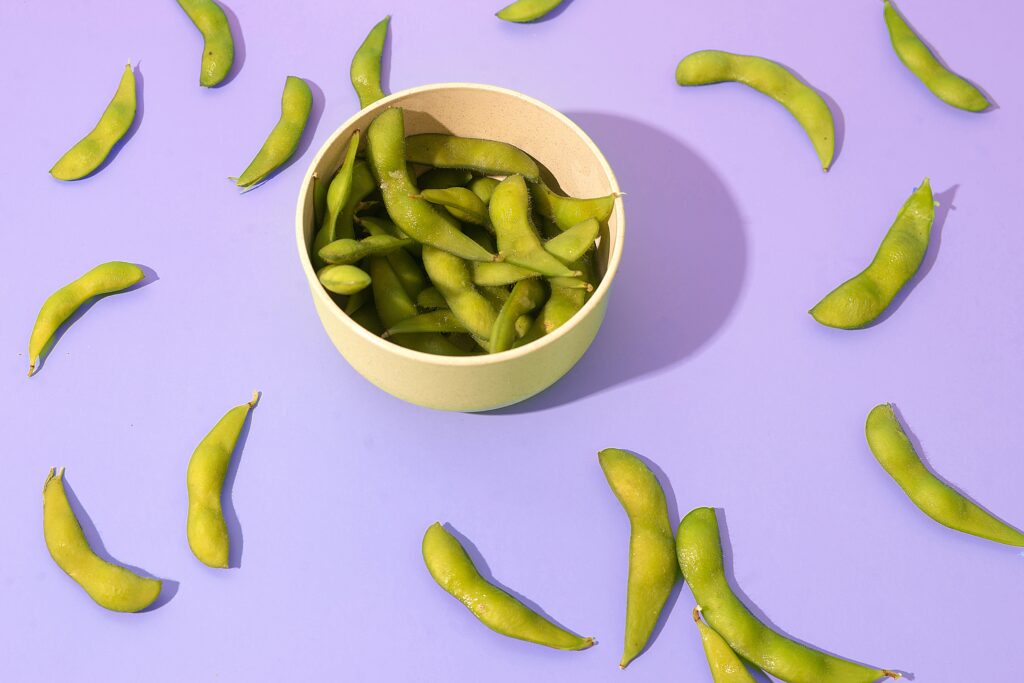
Avocado toast
Avocados are a great source of healthy fats, specifically monounsaturated fats, which are beneficial for heart health. They also contain a small amount of protein (around 2 g per avocado) and are a good source of fiber and potassium. Avocados can be mashed or sliced and placed on whole-grain toast or crackers or used in various recipes such as dips, salads, and sandwiches to create a tasty and nutritious snack.
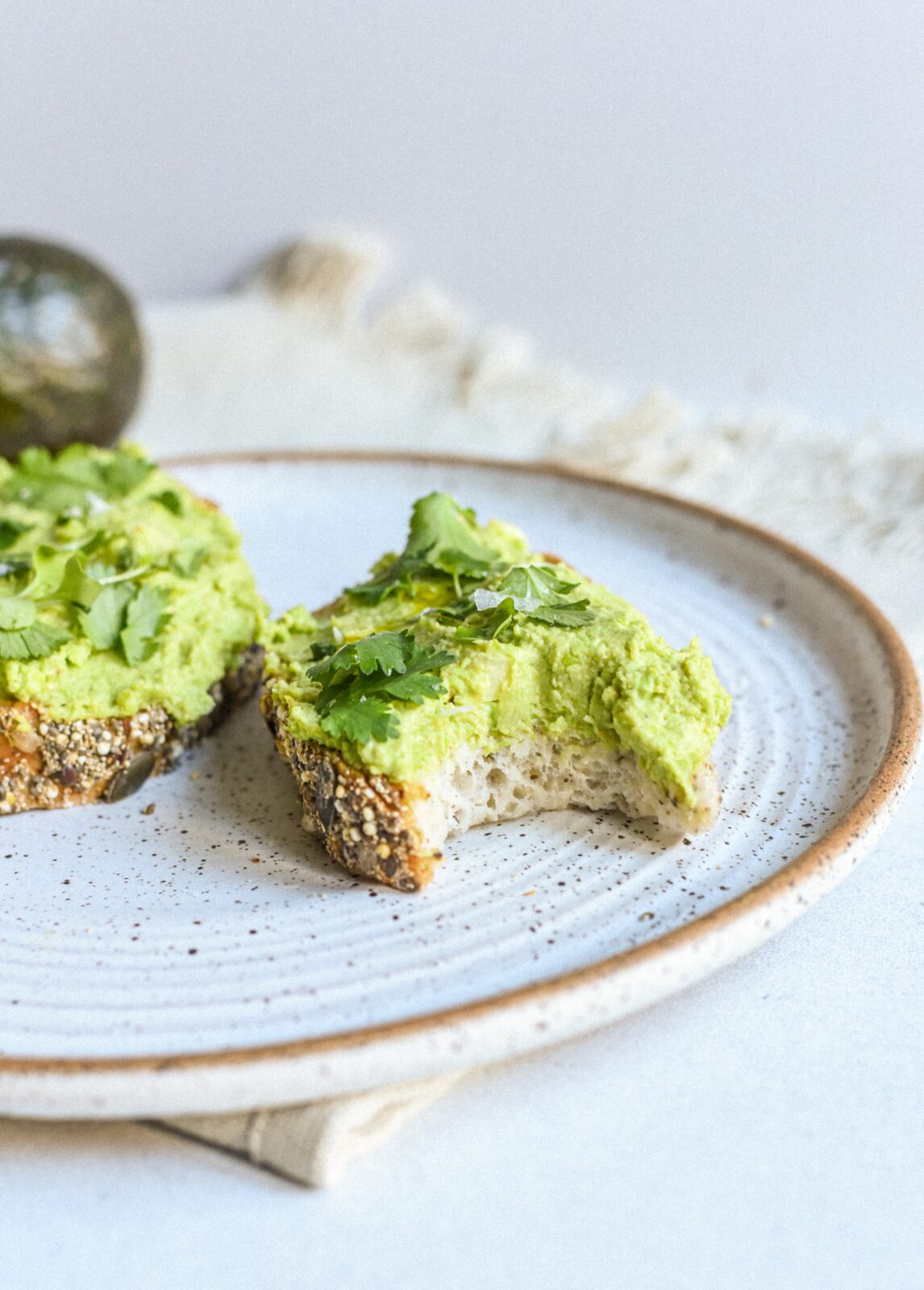
Trail mix
Trail mix can be made with nuts, seeds, and dried fruits for a balanced and satisfying snack. A typical trail mix can be made with nuts, seeds, and dried fruits. Nuts such as almonds, walnuts, and peanuts are good sources of healthy fats, protein, and fiber.
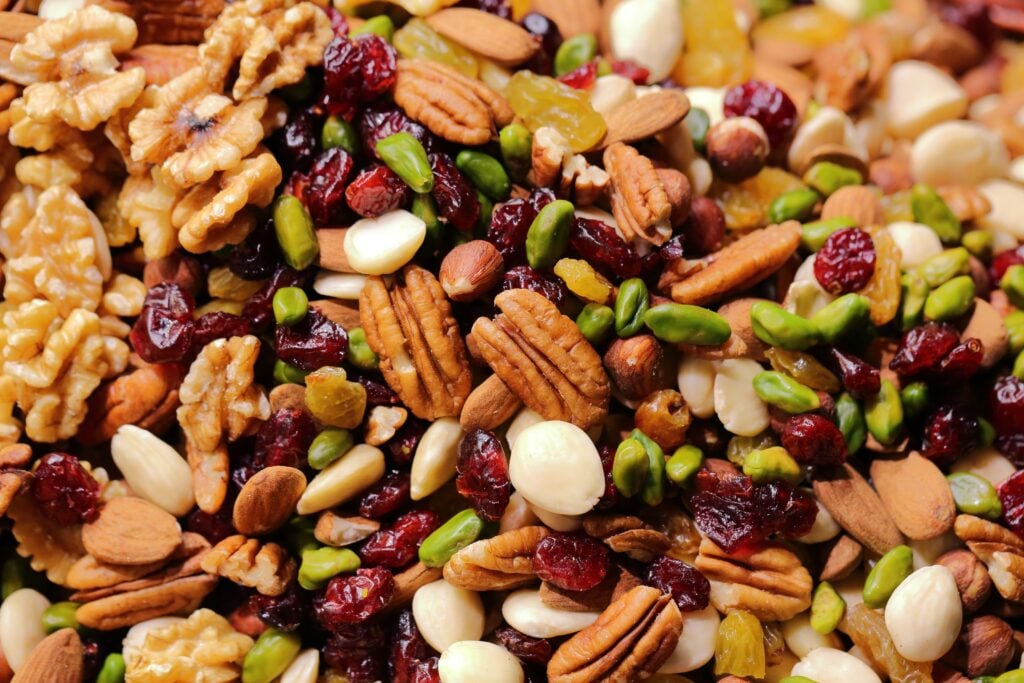
Smoothie
A smoothie made with fruits and healthy fats can provide a satisfying and nutritious snack that is easy to consume. Try my Probiotic Chocolate Peanut Butter Banana Espresso Breakfast Smoothie
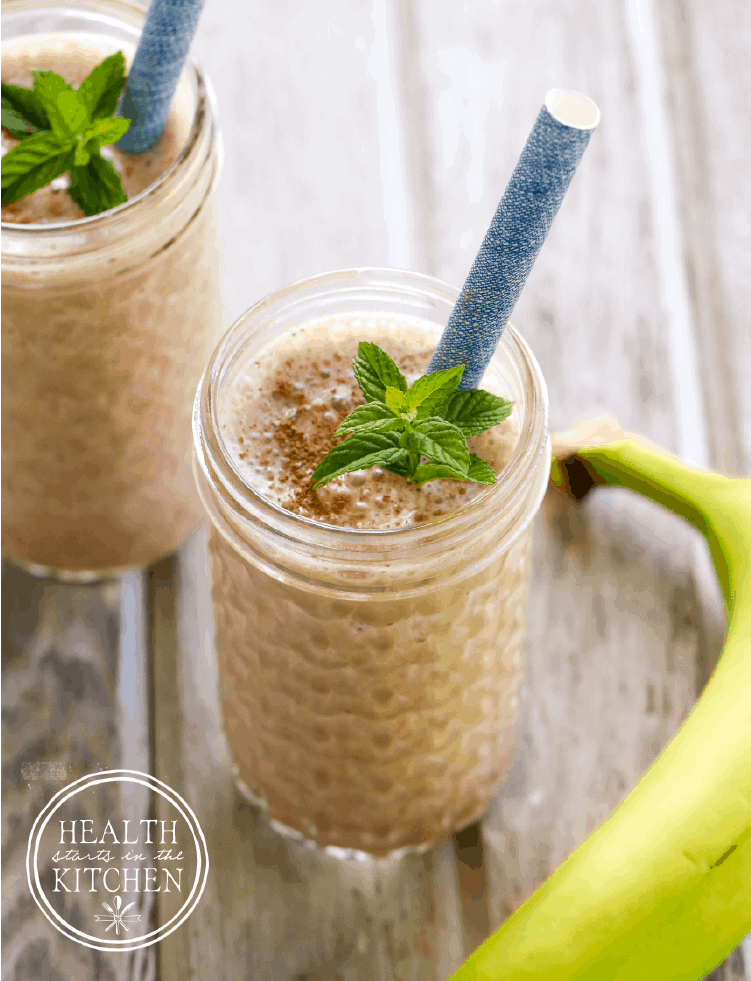
Fruits such as berries, bananas, and mangoes provide essential vitamins, minerals, and antioxidants. Adding healthy fats such as avocado, nuts, or seeds like chia, flax, or hemp can boost the smoothie’s nutritional value, providing more fiber, protein, and healthy fats.
How To Create Balanced Meals Without Including Veggies
Creating balanced meals without including vegetables can be more challenging, but it is possible. Here are some tips for creating balanced meals without including vegetables:
- Include a source of lean protein – This can consist of chicken, fish, lean beef, eggs, or legumes.
- Incorporate healthy fats – Healthy fats such as avocado, nuts, seeds, olive oil, and fatty fish can help to reduce inflammation and promote weight loss.
- Include whole grains – Whole grains such as quinoa, brown rice, and oats provide essential nutrients, fiber, and minerals.
- Incorporate fruits – Fruits like berries, apples, and citrus fruits provide essential vitamins, minerals, and fiber.
- Use herbs and spices – Herbs and spices can add flavor and nutrition to meals and also help to reduce the need for added salt and sugar.
- Include fermented foods – Foods like yogurt, kefir, sauerkraut, and kimchi are rich in probiotics which can aid in digestion and boost immunity. My Fermented Foods at Every Meal cookbook is a great resource!
- Use plant-based protein – Plant-based proteins like tofu, tempeh, or seitan can provide a balanced meal without including vegetables.
It’s important to note that vegetables are an essential part of a balanced diet and provide a variety of nutrients, so it is recommended to include them in your meals whenever possible.
